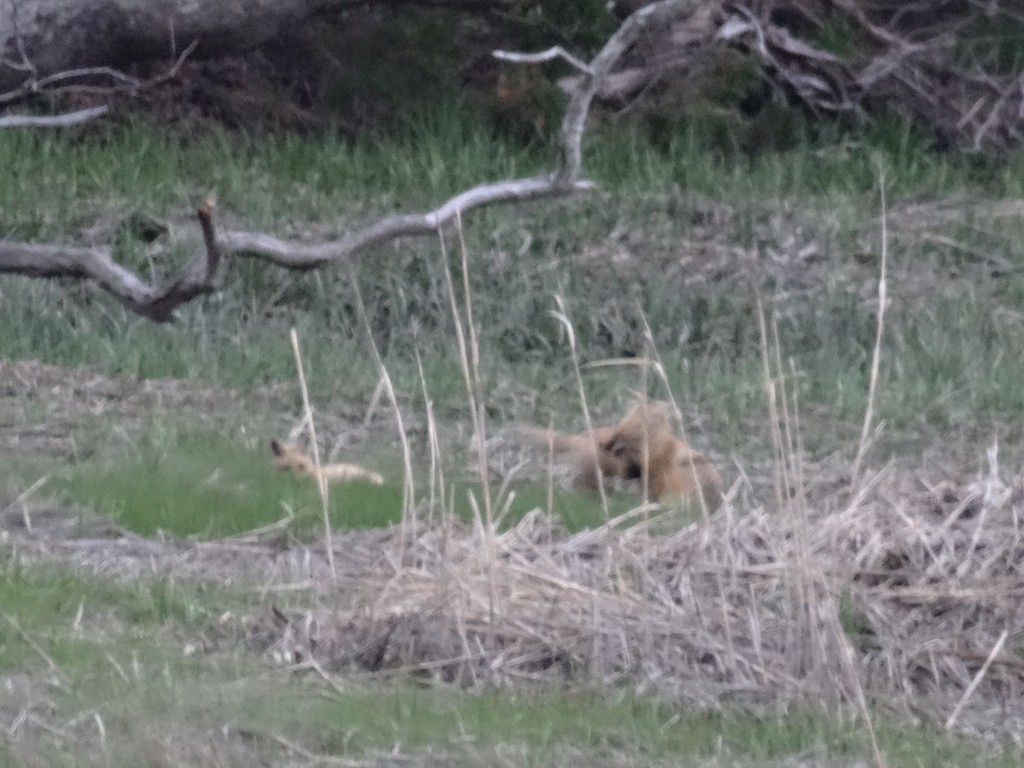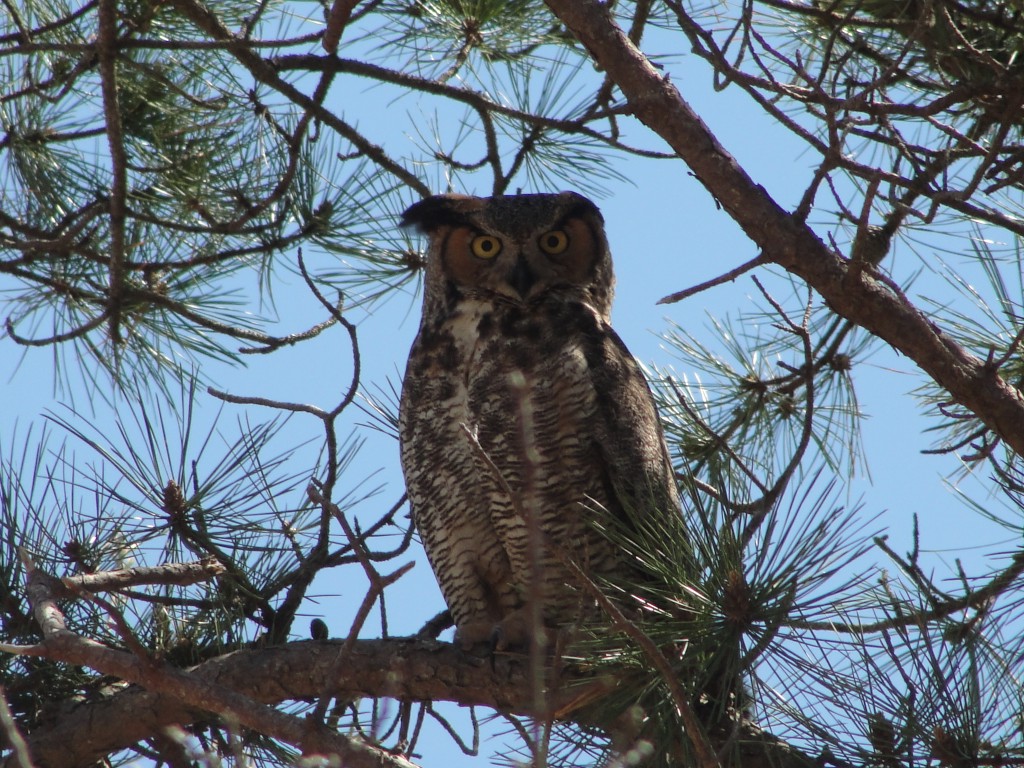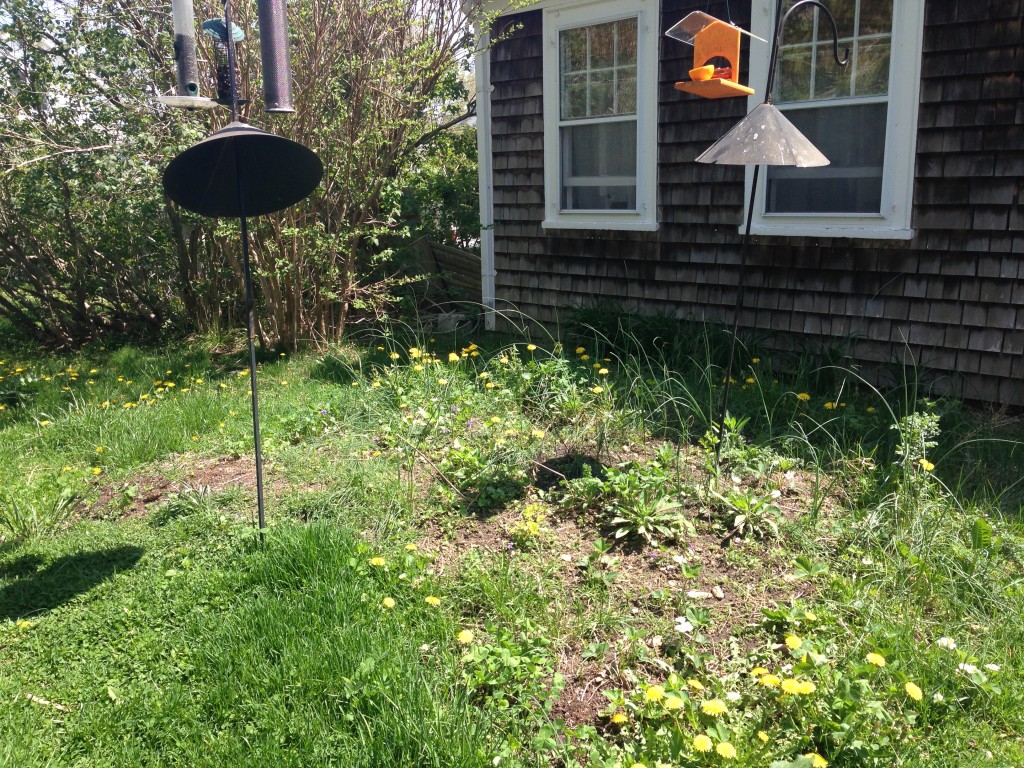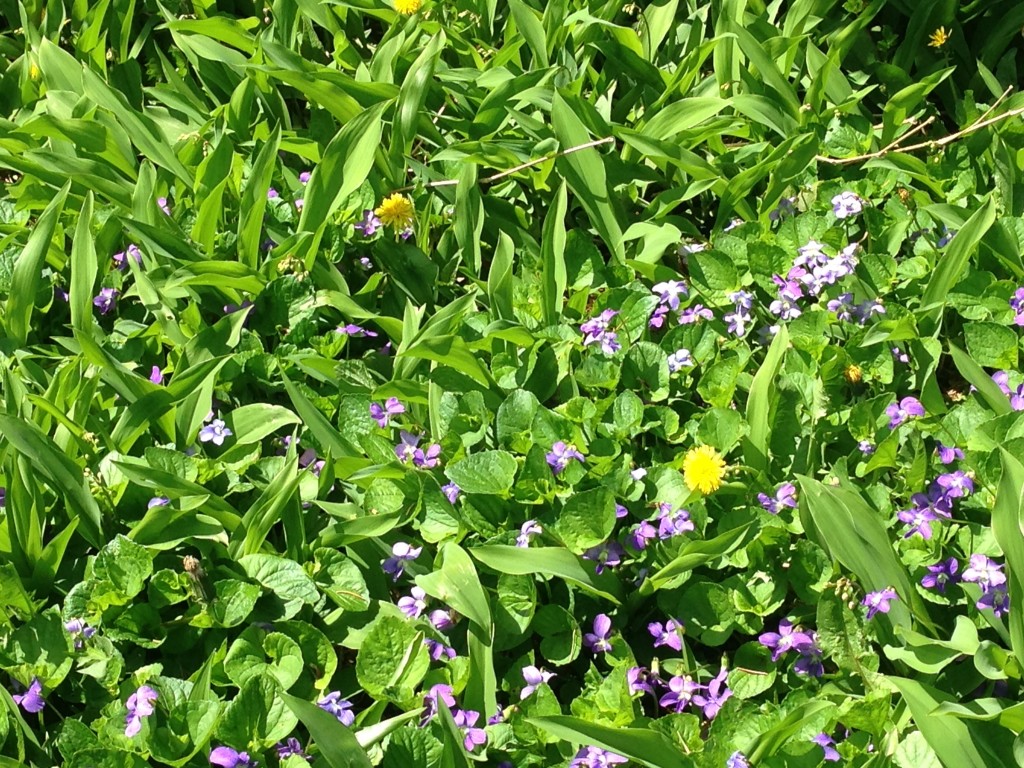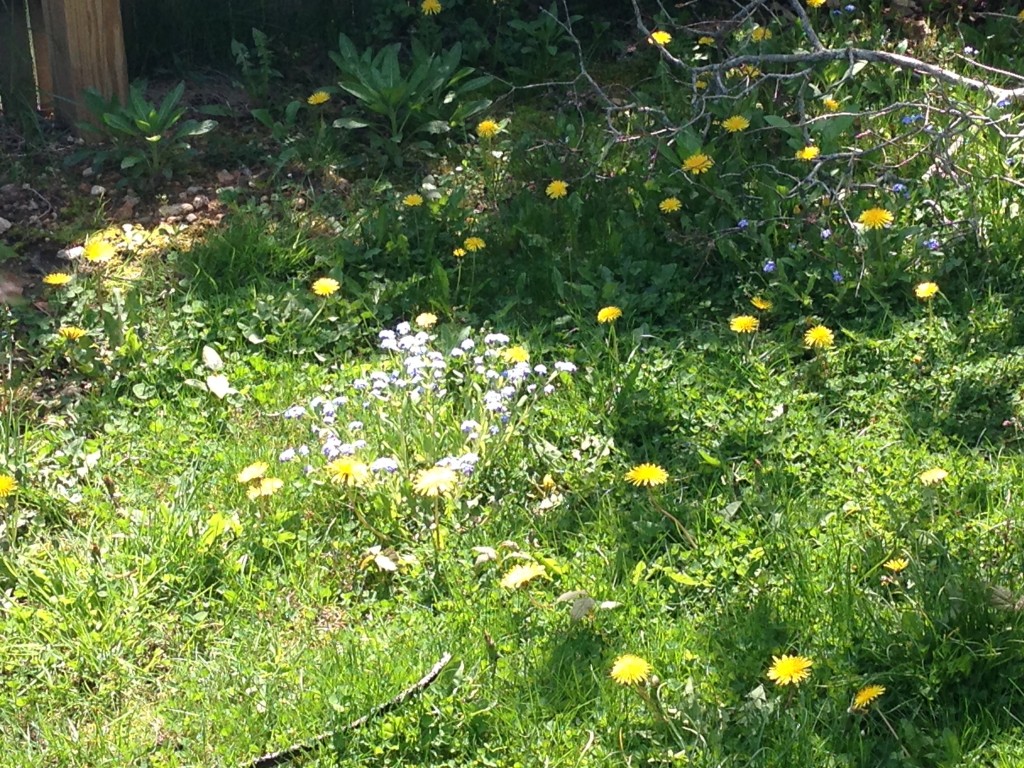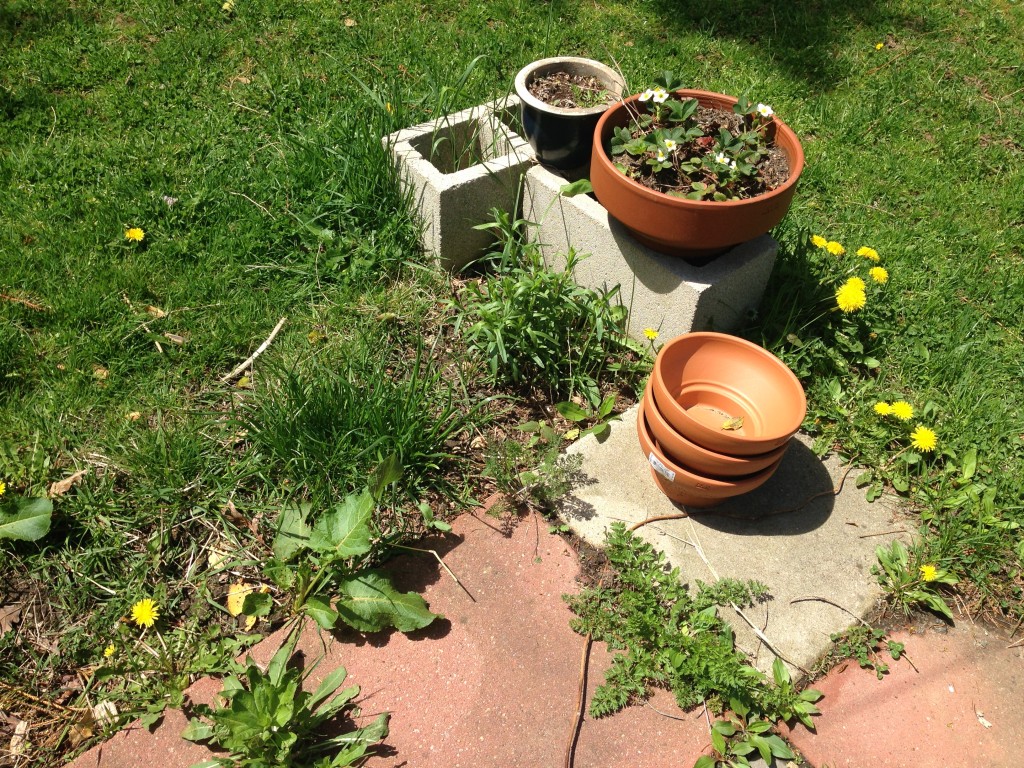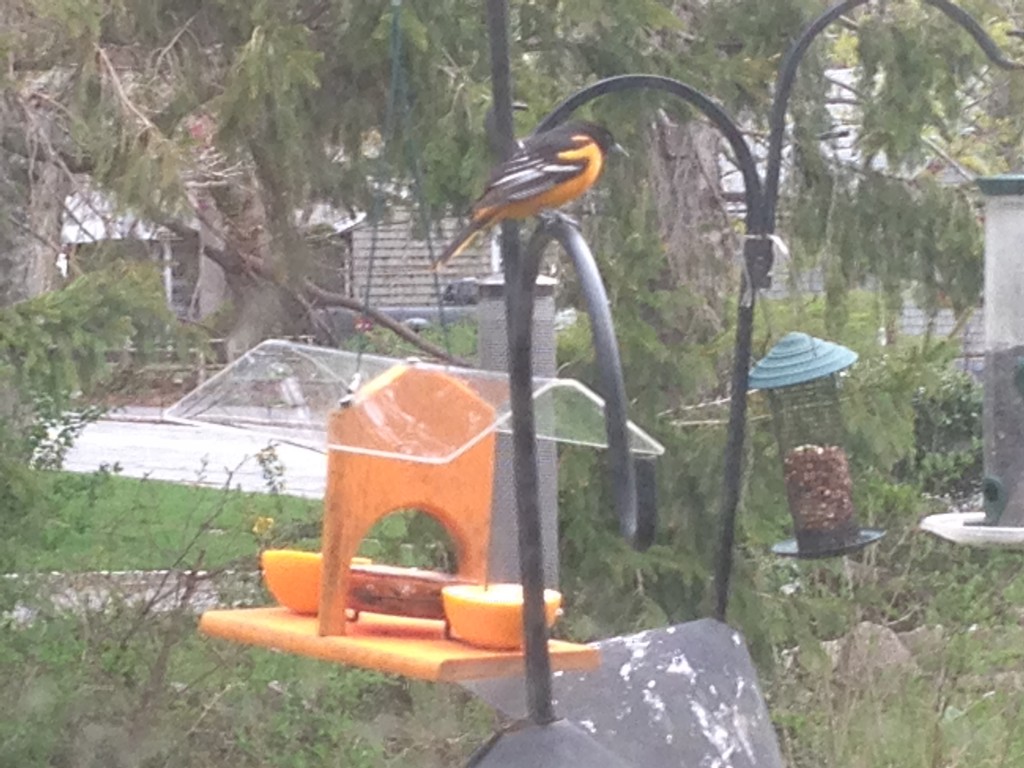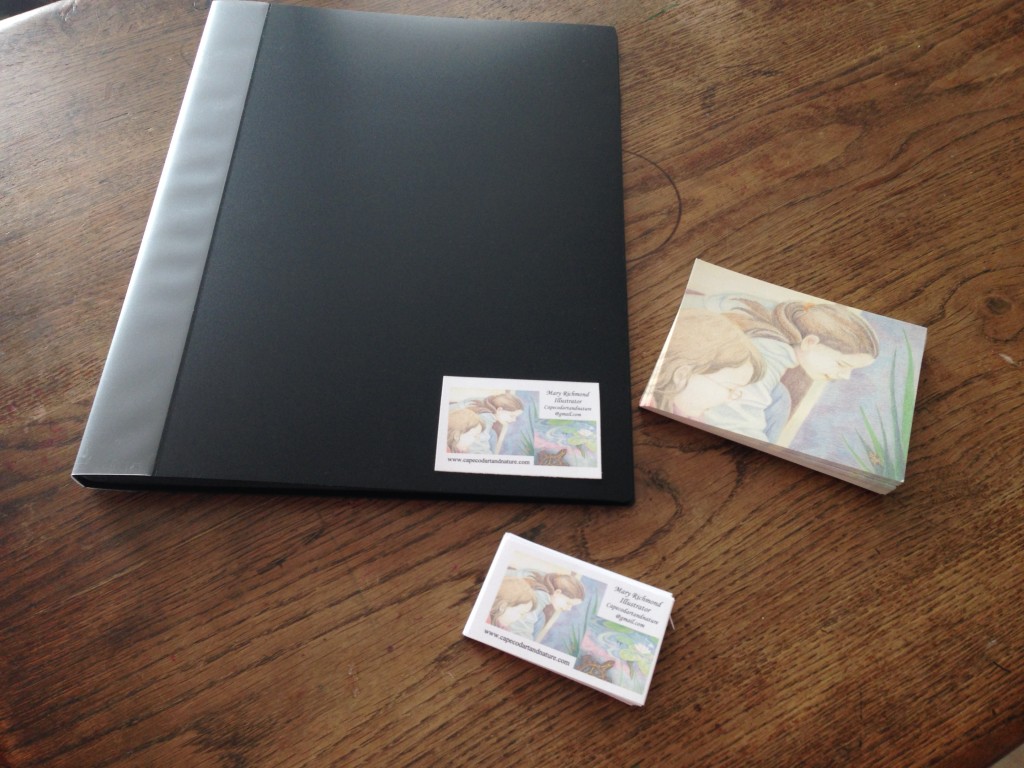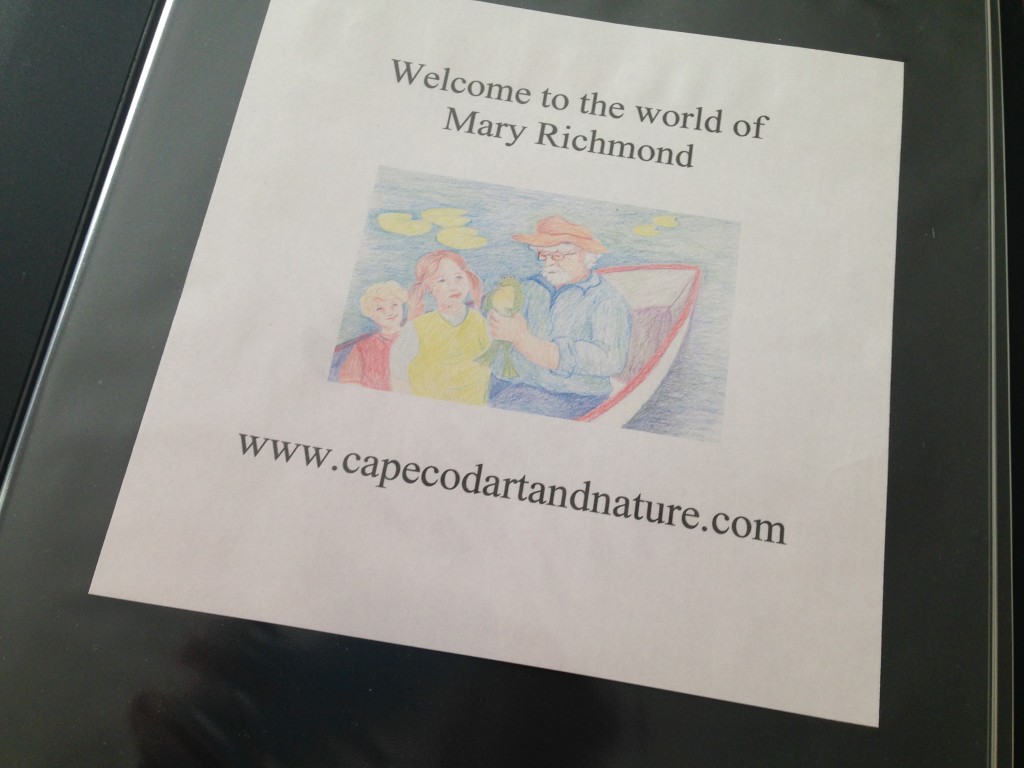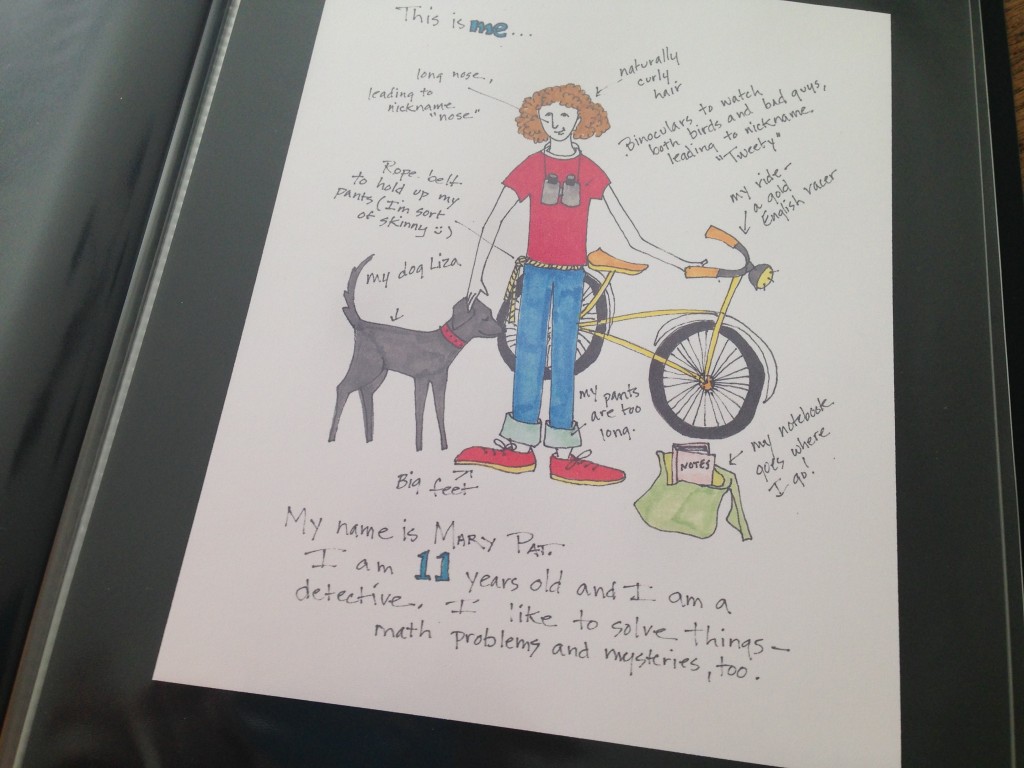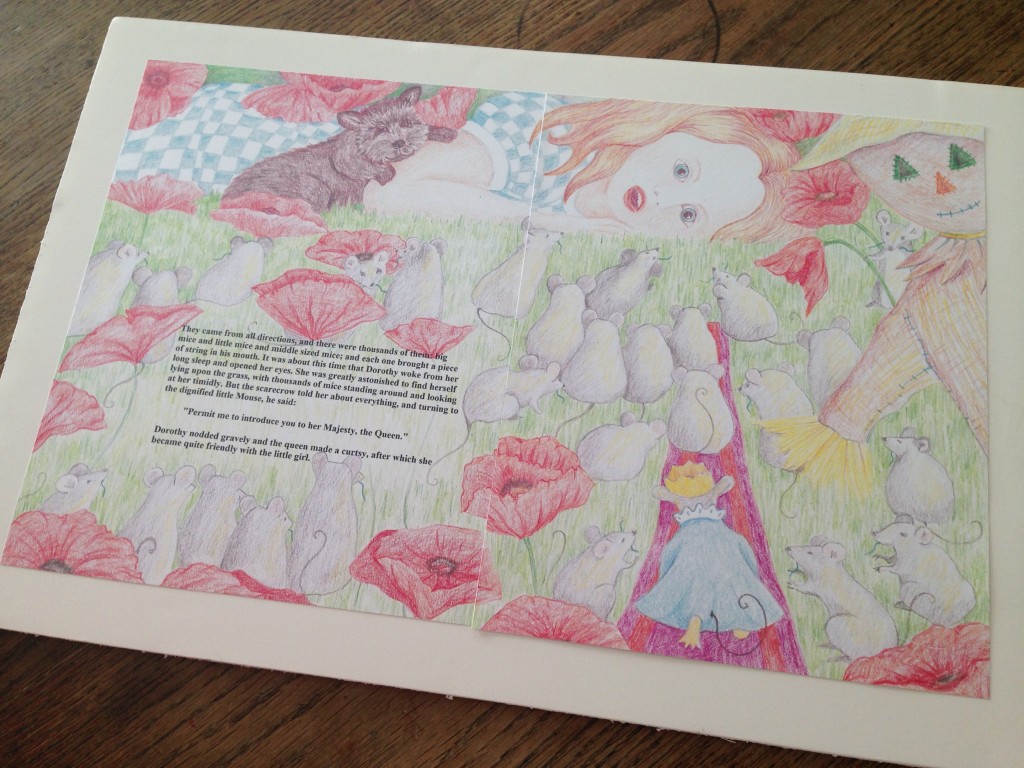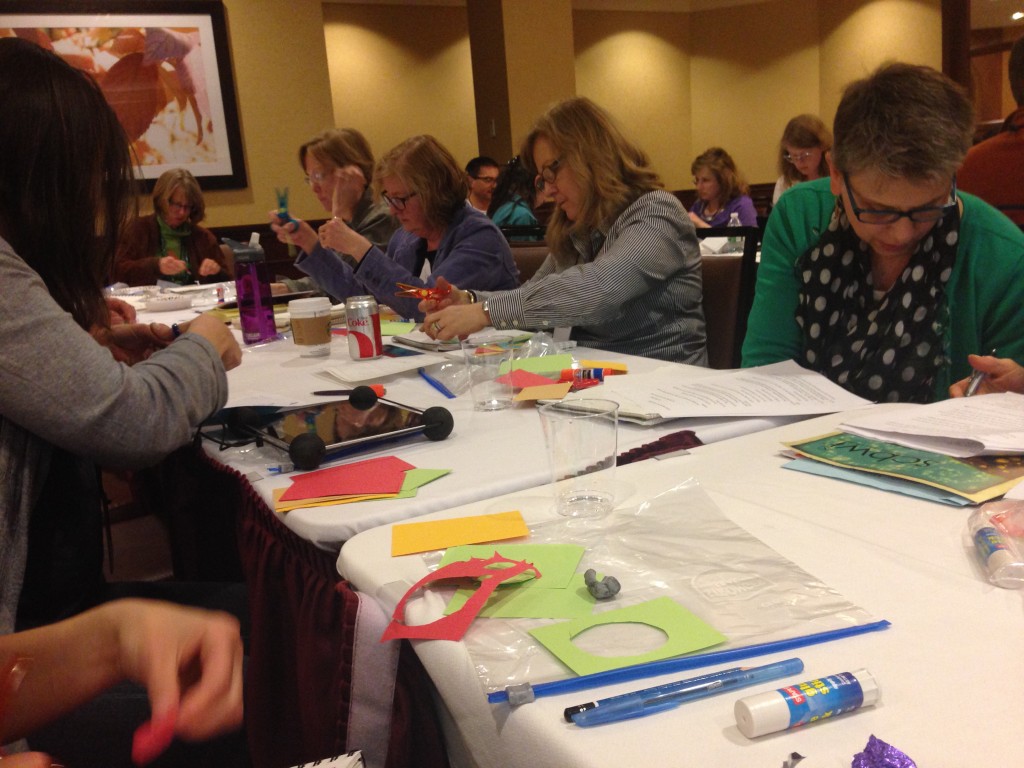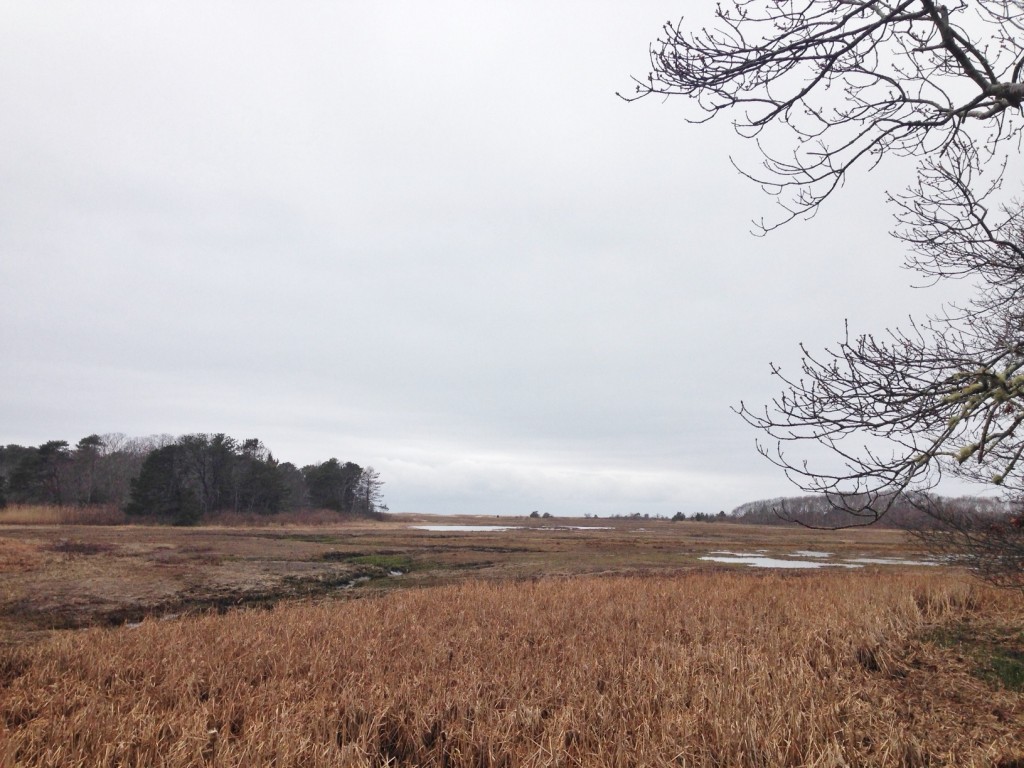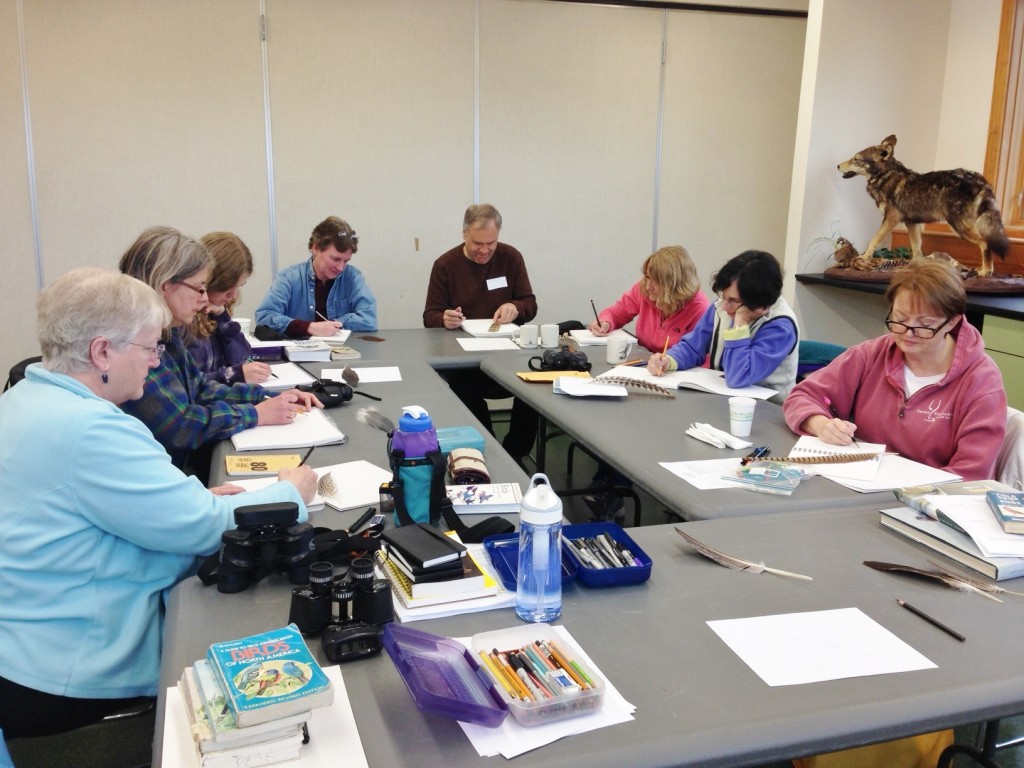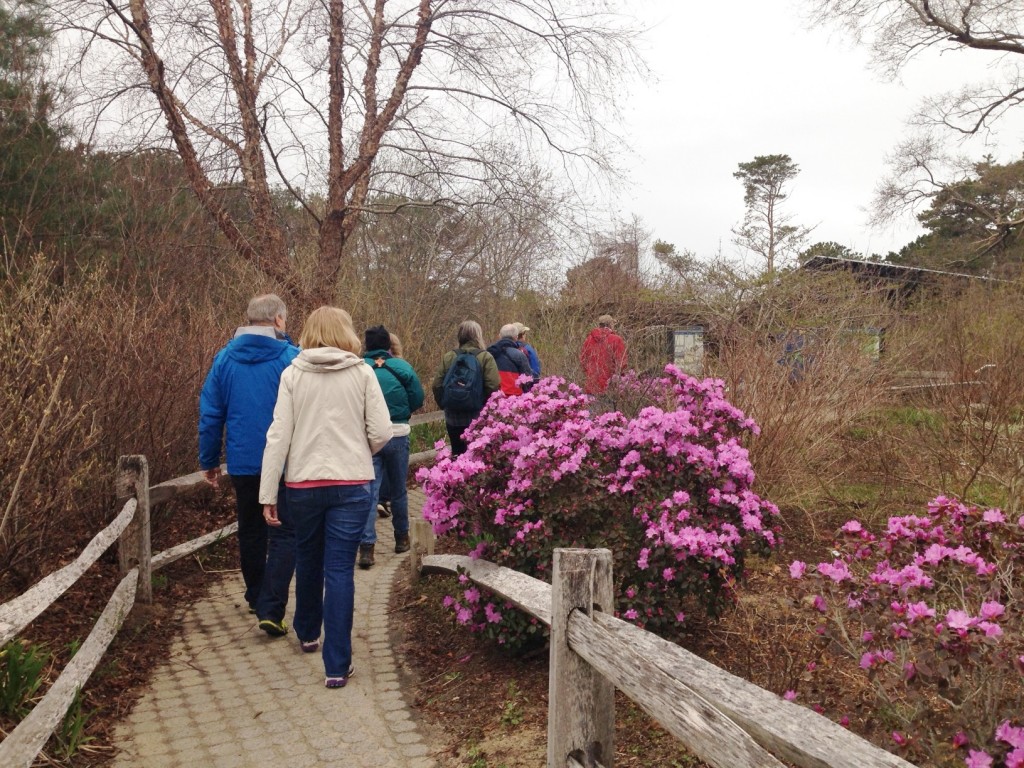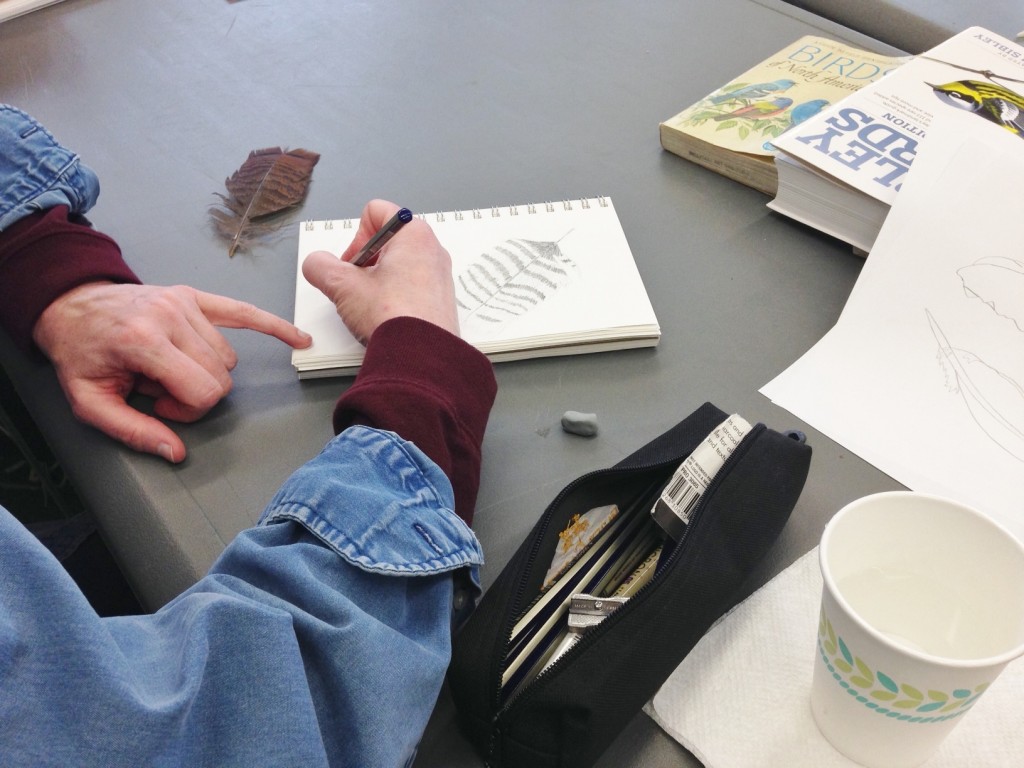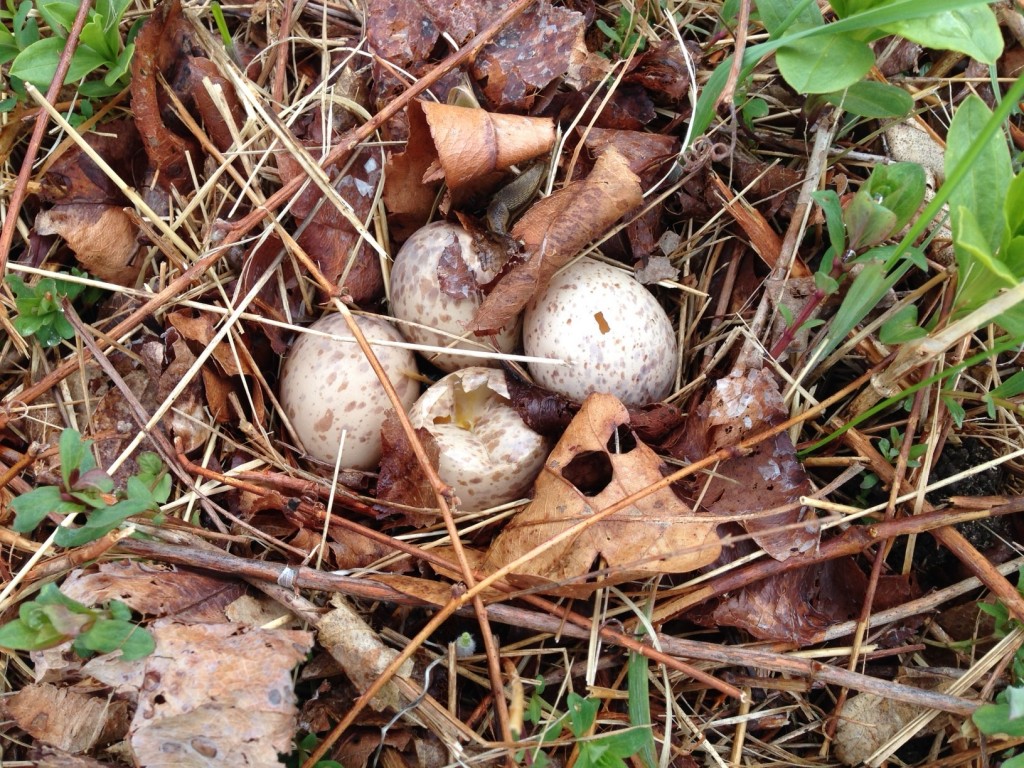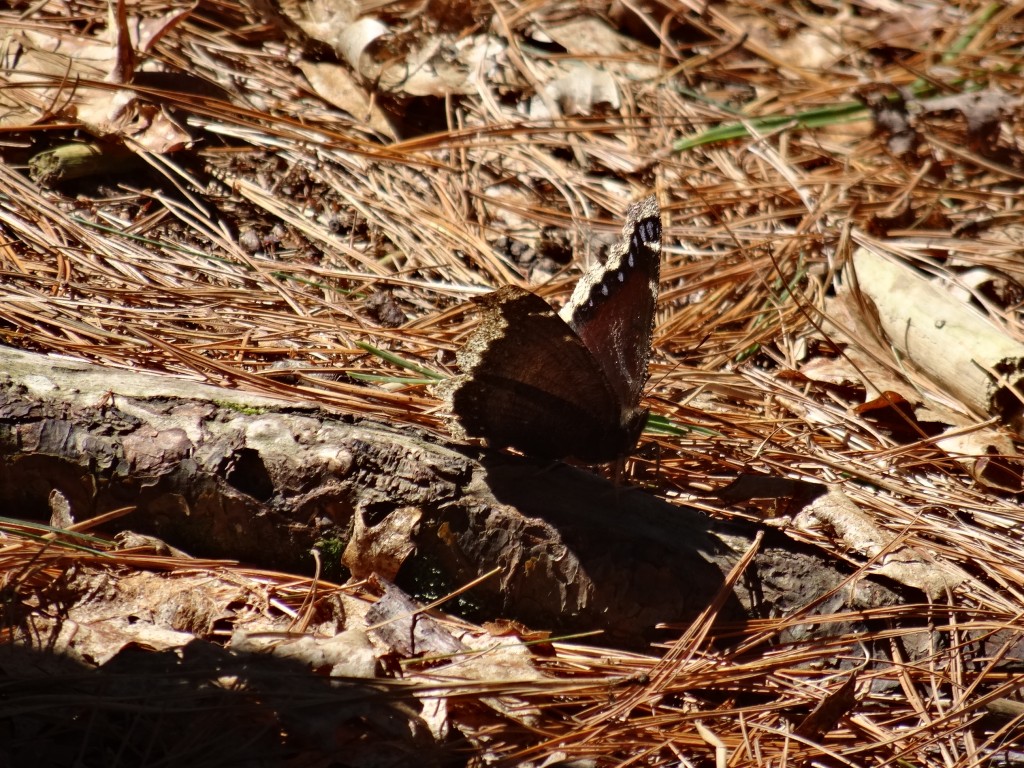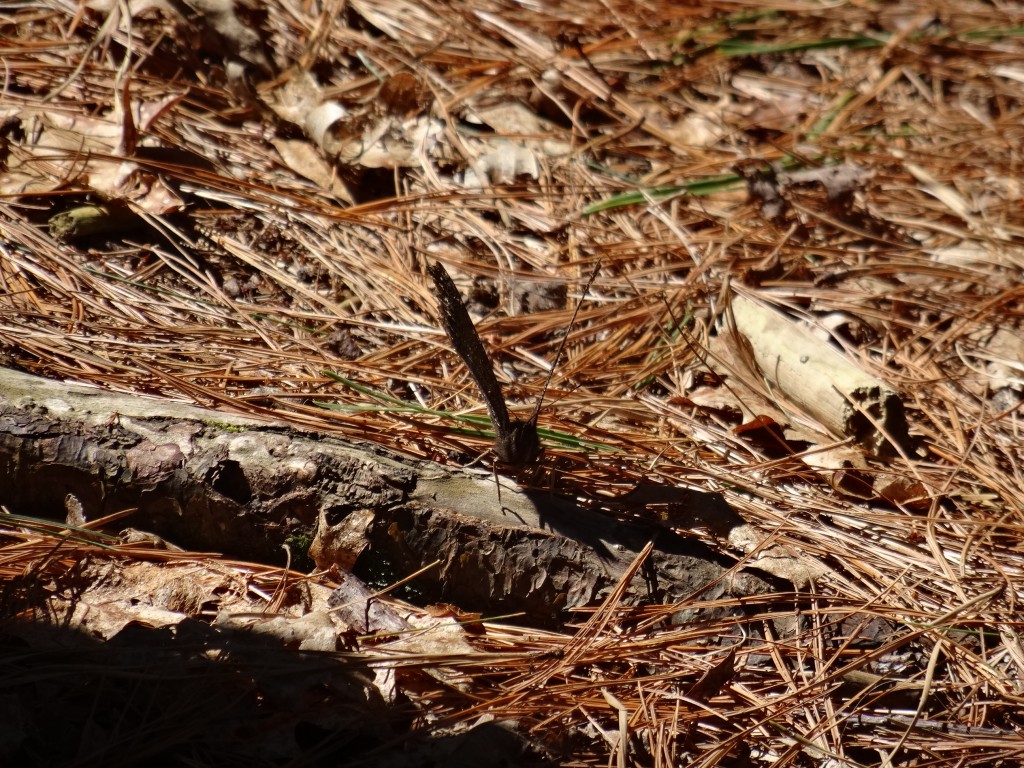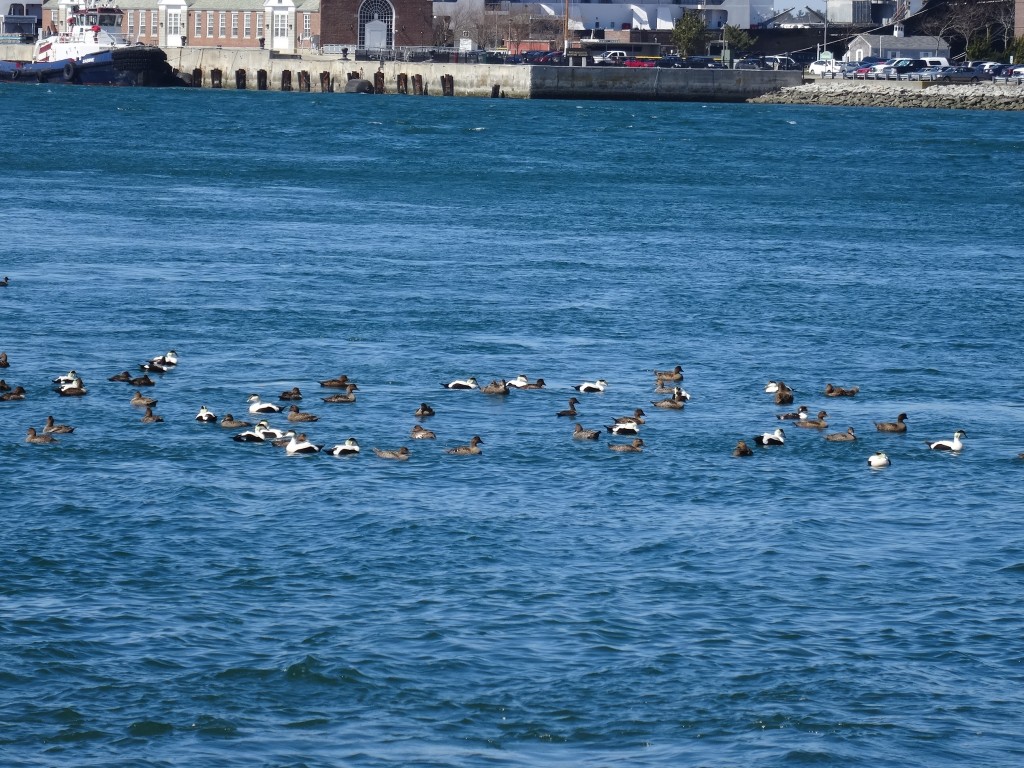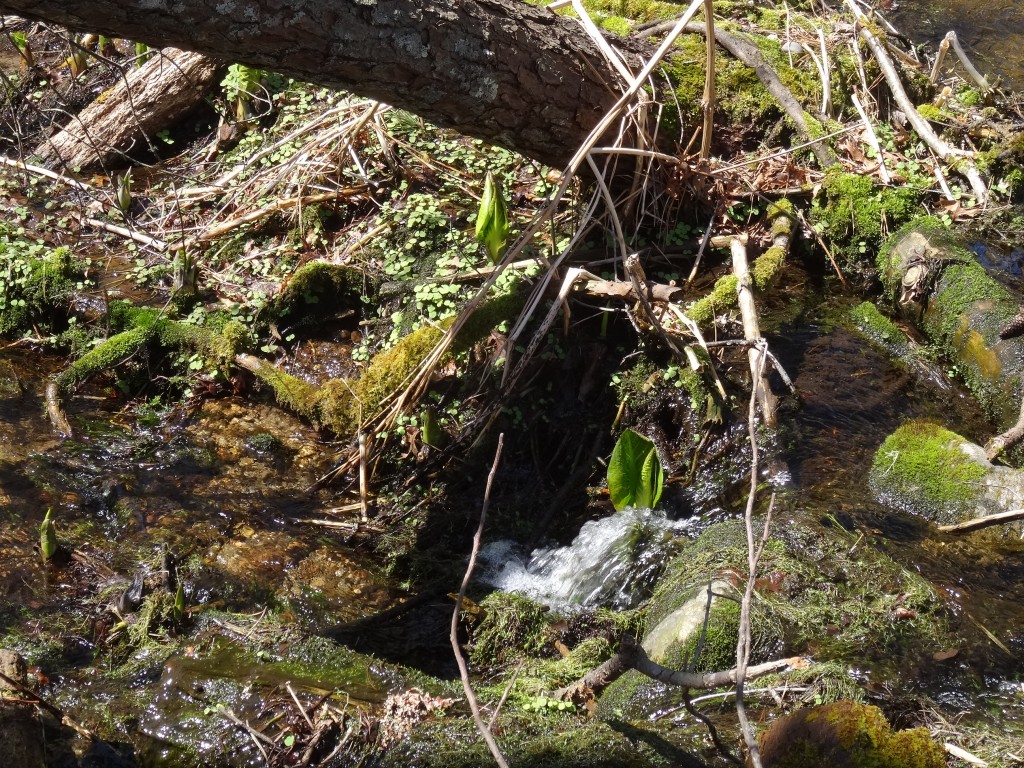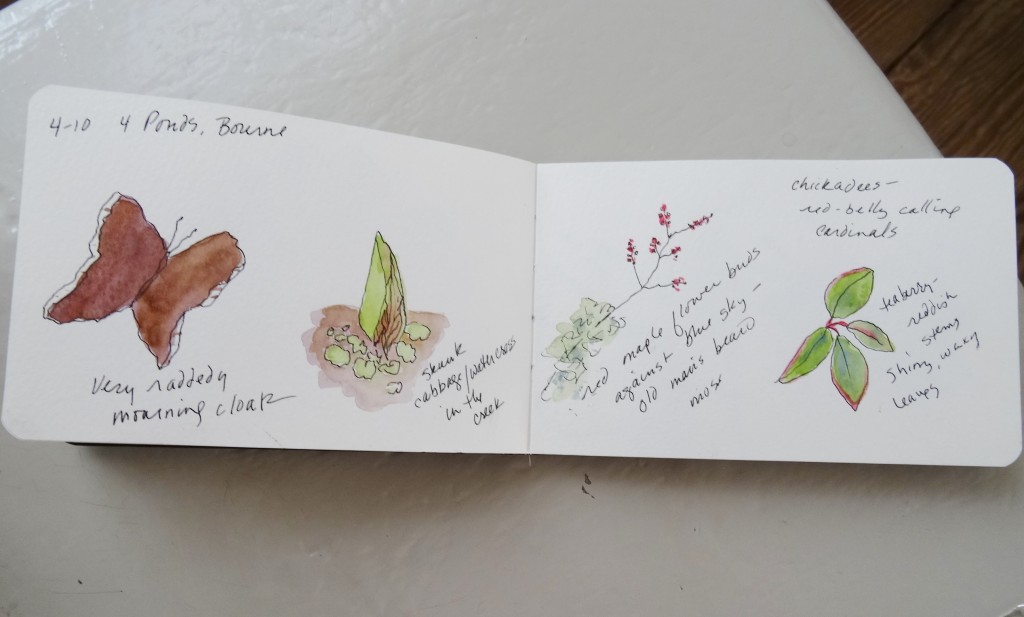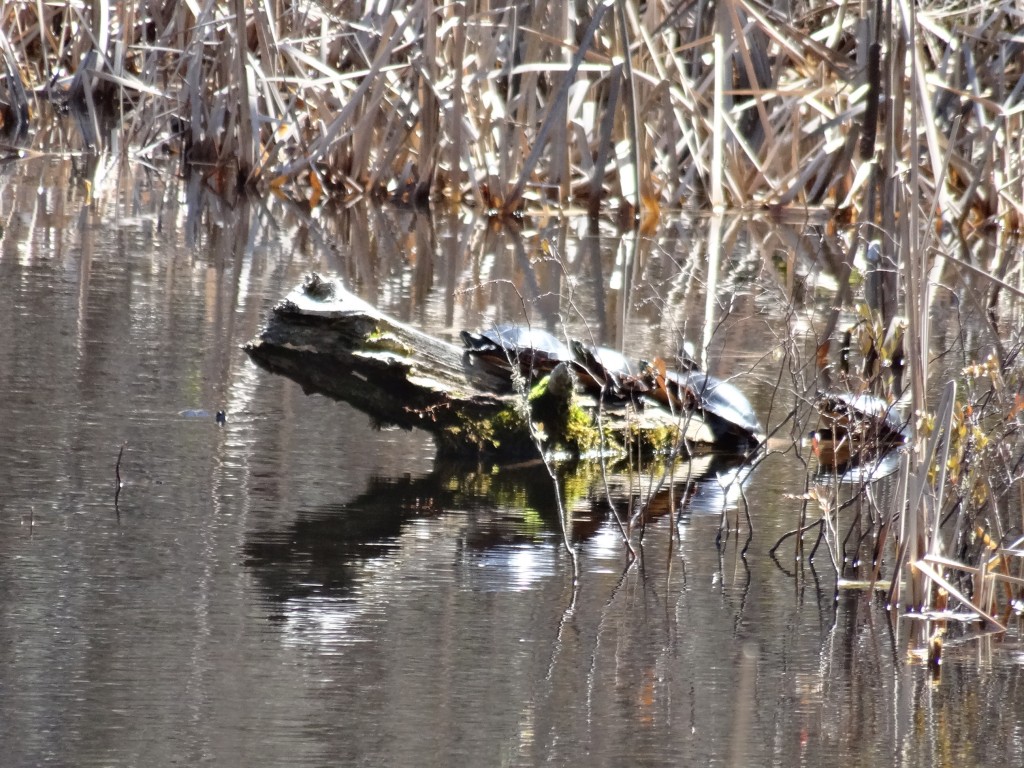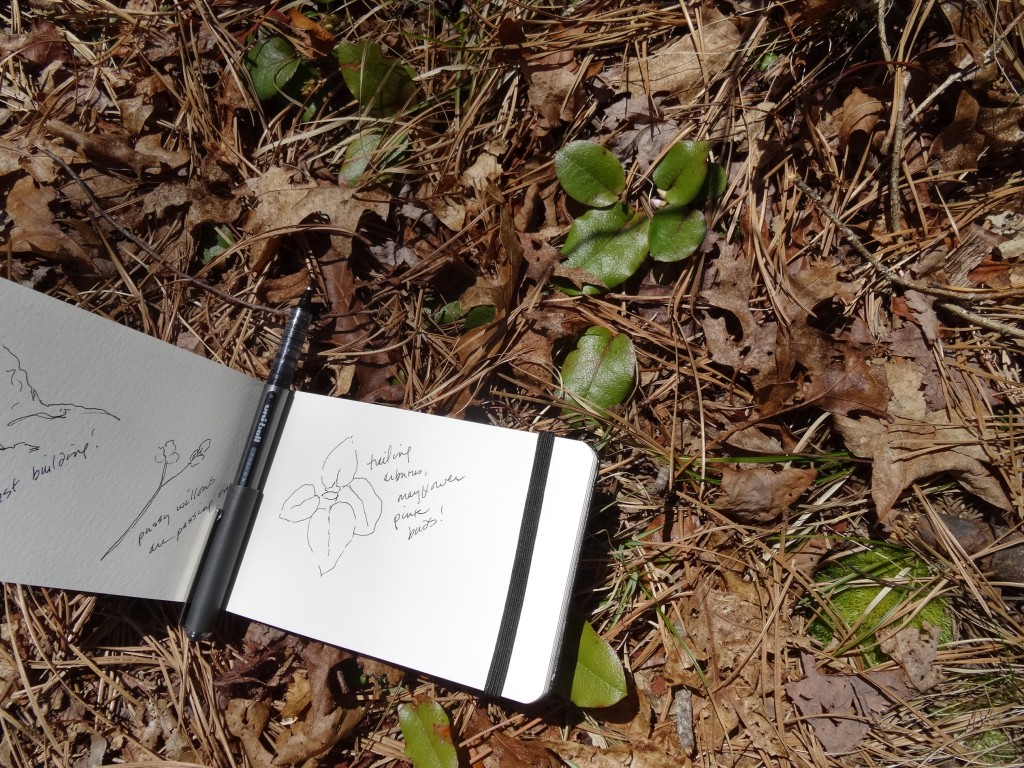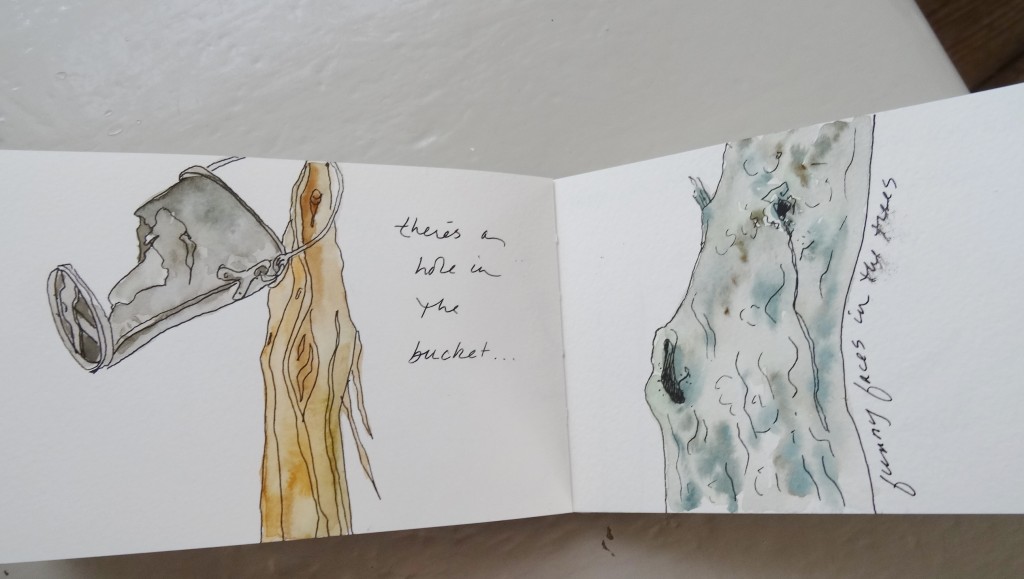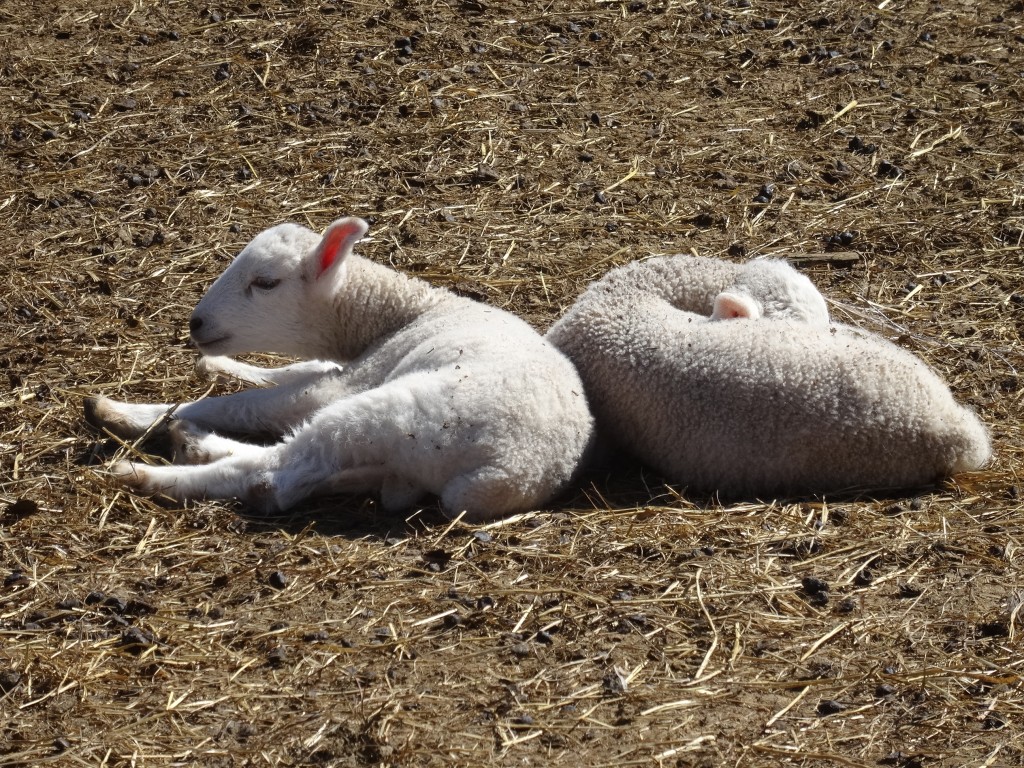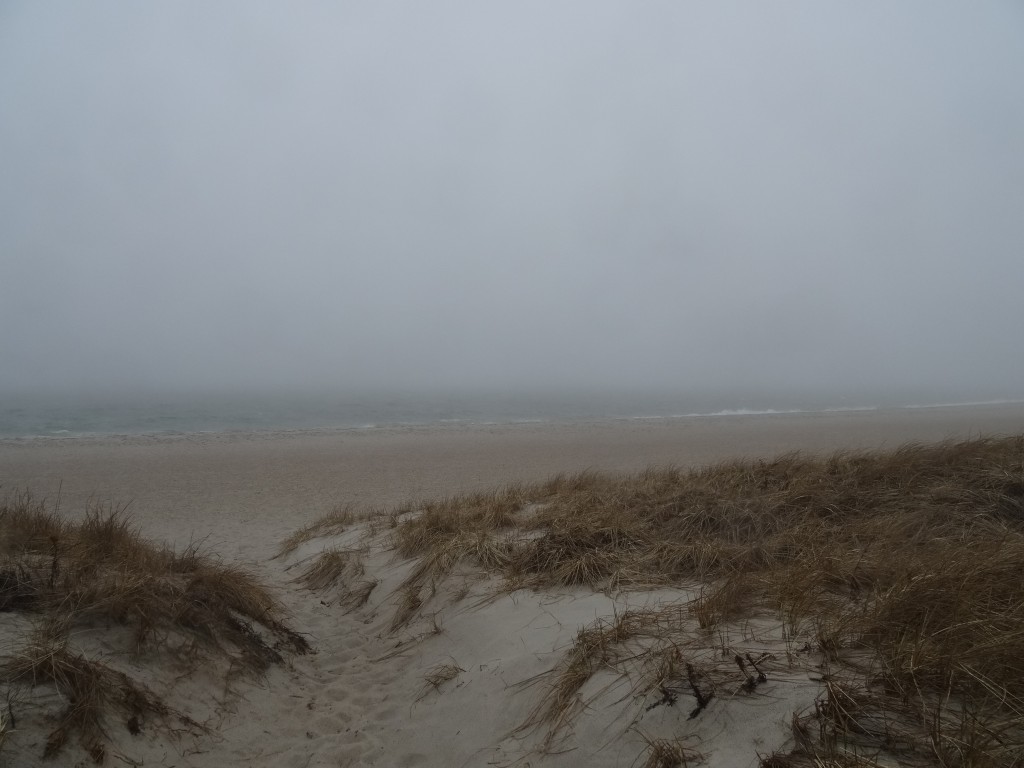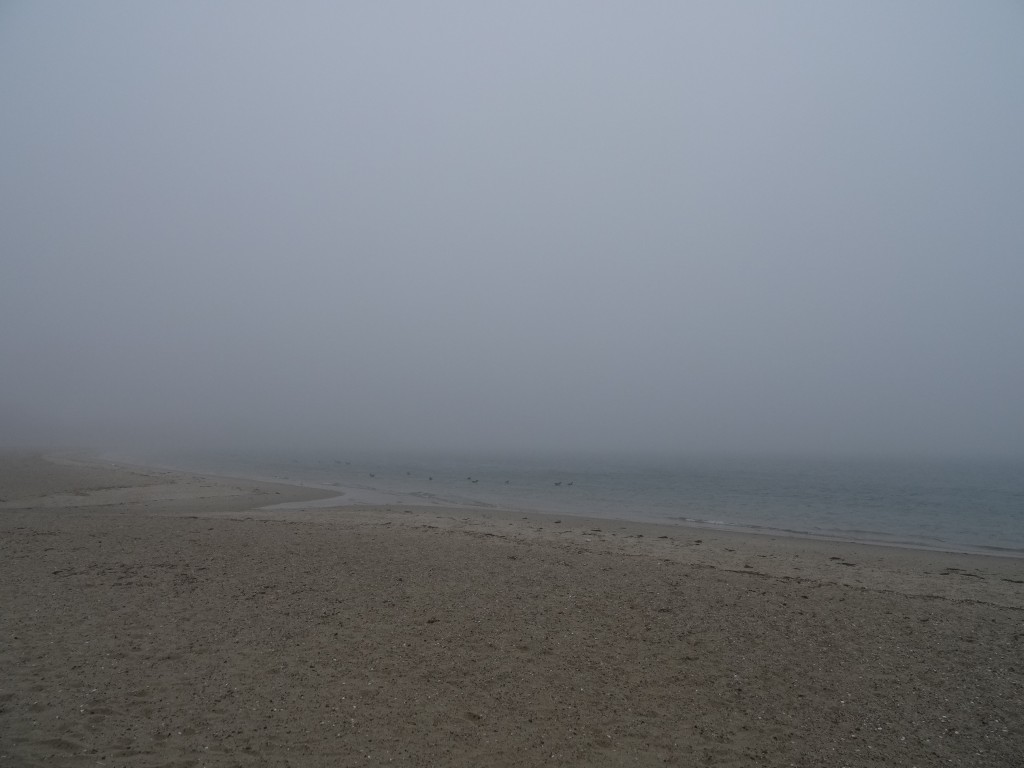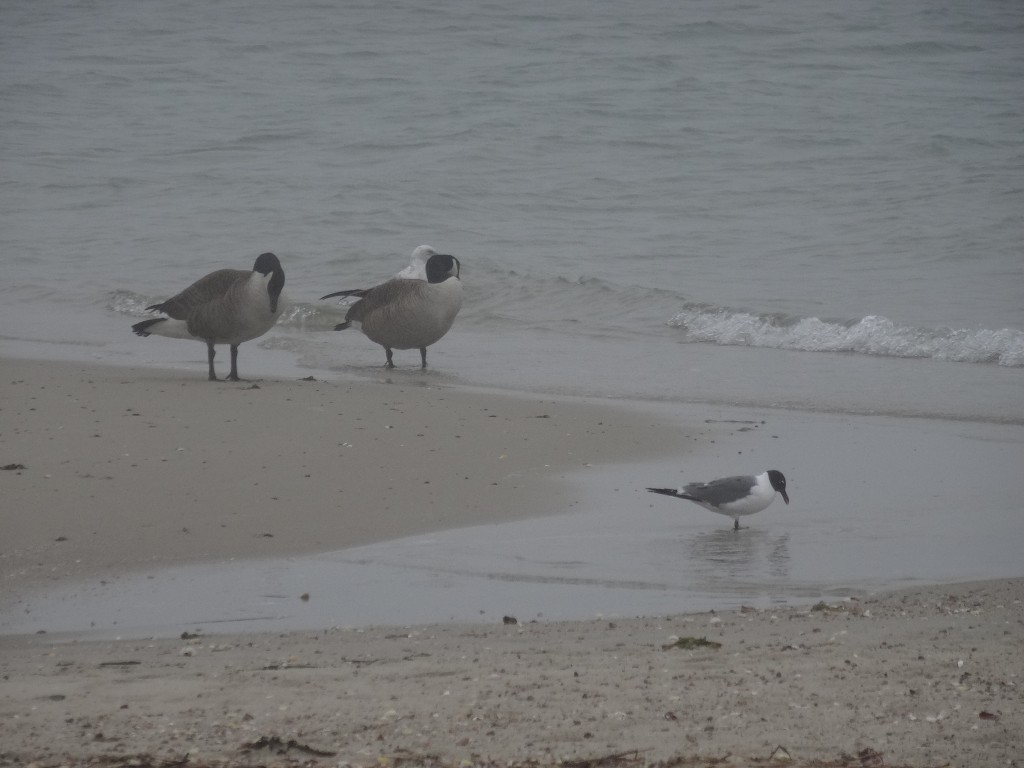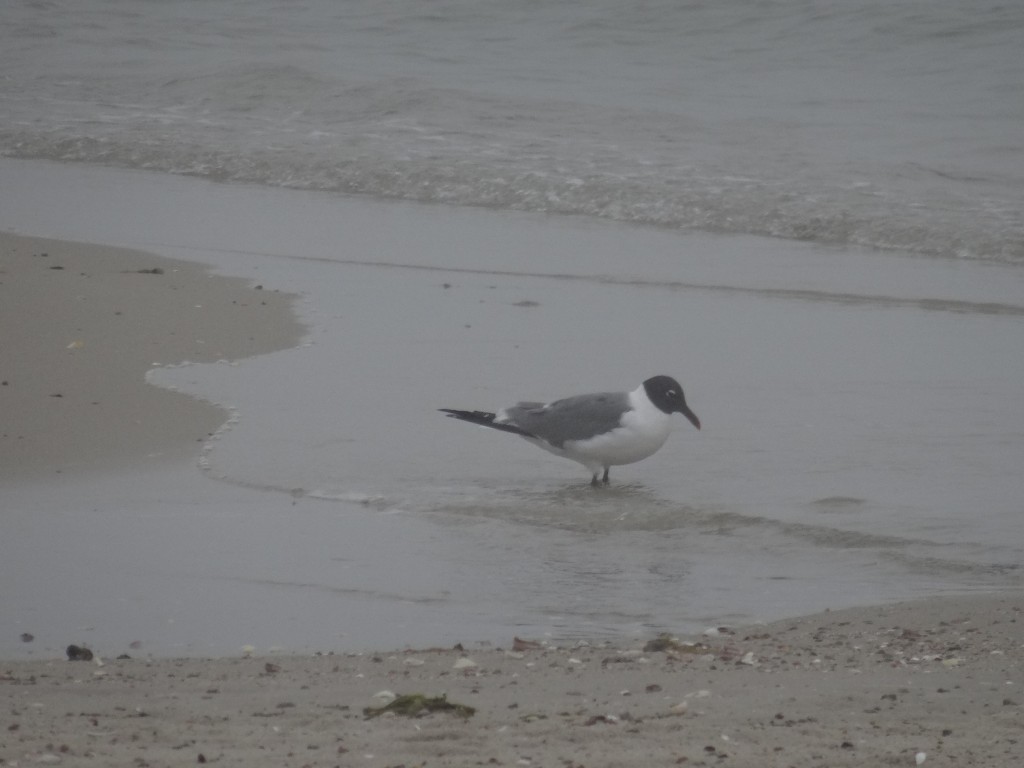Friday, May 16, the Mass Audubon Birdathon 2014 began at 6 p.m. sharp. Our little sub team of 5 began at the game farm in East Sandwich. The forecast was for rain showers and it was gray, windy and cool. Not perfect birding weather but we were ready.
We quickly added common and easily found birds such as red-winged blackbirds, common grackles, chickadees and titmouse. There was a willet and an osprey, a downy woodpecker and a Baltimore oriole. We were hoping for a ruffed grouse and a wood thrush as we have had them here in Birdathons past….we got the wood thrush but no grouse this year. We stopped to watch some fox kits play with their mother….
We left after dark and prepared for a very early morning the next day. We got up at 4 and were at our first meeting place at 5:30. Our big score for the early morning was the raven sighting at the canal. Not just one, but five! It began to pour rain
but we put on our game faces and made the soggy drive to Wompatuck State Park in Hingham where all the birders seem to go each spring to score the most warblers and other migrants. The rain slowed and finally stopped.
We got lots of warblers, a scarlet tanager, a very insistent veery, tons of noisy ovebirds and even a Louisiana waterthrush. We also got a yellow billed cuckoo, which was very cool for me. I also had a life bird, a blue winged warbler!
The birds were singing, buzzing and whistling like crazy. Birders were running around like crazy. Some talked, some did not. Did I mention this was a competition? We never thought we’d win so we shared info. Let’s just say some others did not….
We carried on….sometimes we just stopped and listened and enjoyed the scenery…
We got an upland sandpiper, a kildeer, horned larks, a field sparrow, a vesper sparrow and tons of prairie warblers at the Plymouth airport but not the kestrel we hoped for. We moved on to Manomet Point where we got purple sandpipers, northern gannets and bank swallows as well as assorted terns, gulls and lots of cormorants and ducks.
As you can see, once the rain cleared out it quickly became a beautiful spring day. We moved on down to the marshes in Ellisville and ended our day scoping out scoters at Sandy Neck. It was an awesome day and our little sub team ended up with 100 species in 24 hours! Our bigger team, spread state wide, ended up with about 180 species. Not too shabby! For me, the day was as much about good company as good birding as I got to hang out with my long time friends, Stu and Kathy Parsons. One of Kathy’s plover monitors, Liz, was a great addition to the team as well. Katie, who joined us for Friday night was unable to join us Saturday so I do not have her photo.
I am not a big fan of my own photos but here I am with Kathy, to commemorate a wonderful Birdathon 2014! Thank you to those of you who supported the Coastal Waterbird Program. It is still not too late to make a donation!


